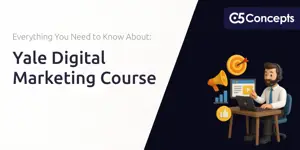Young professionals stepping into the workforce face a landscape of promise and uncertainty. Recent surveys reveal that more than eight in 10 Gen Z and Millennials acknowledge their financial planning needs improvement. Whether you’ve just landed your first job or are advancing in your career, developing a financial strategy early can pave the way to long-term financial security and freedom. This comprehensive guide offers inspiration and practical tools to transform ambition into actionable steps.
Understanding Your Financial Landscape
Before setting any goals, you need clarity on where you stand. Studies show that 37% of early-career workers are focused on paying down debt, while only 18% prioritize building a safety net. Tracking income and expenses provides a snapshot of cash flow and highlights areas to optimize. Begin with a self-assessment of financial health by listing all sources of income, recurring bills, and discretionary spending. This honest evaluation becomes the foundation for every decision you make.
Setting Clear Financial Goals
Once you understand your baseline, envision where you want to be. Goals might include buying a home, becoming debt-free, starting a family, or achieving early retirement. Defining specific targets—complete with timelines and dollar amounts—transforms dreams into measurable objectives. When you outline these aspirations, you ignite motivation and create a roadmap. For instance, planning to save a down payment for a home within five years can guide monthly contributions and investment choices.
Implementing an Effective Budget
A budget is your blueprint for allocating resources wisely. One popular framework is the 50/30/20 rule, which divides income into needs, wants, and savings or debt repayment. By adhering to this structure, you ensure essentials are covered, lifestyle choices remain balanced, and future planning is prioritized.
- 50% on needs (housing, utilities, transportation)
- 30% on wants (dining out, entertainment, hobbies)
- 20% on savings and debt repayment
Consistently tracking expenses against this model helps you identify overspending and adjust categories. Digital tools or simple spreadsheets can automate this process and send alerts when you approach limits.
Managing Debt with Confidence
Debt can feel like a weight, but a strategic approach turns it into manageable milestones. Prioritize high-interest obligations—credit cards and personal loans—before tackling lower-rate debts like student loans. By focusing on a high-interest debt repayment plan, you reduce overall interest costs and accelerate progress. Create a schedule that outlines minimum payments plus extra contributions to the highest-rate account. Celebrate each account payoff as a significant victory and reallocate freed-up funds to the next target.
Building a Robust Emergency Fund
An emergency fund is your financial safety net, shielding long-term plans from unexpected events. Aim for 3 to 6 months of expenses set aside in a liquid account. This buffer prevents reliance on credit cards or loans when unforeseen costs—like medical bills or urgent car repairs—arise. Automate transfers to a high-yield savings account each payday, and treat this fund with the same priority as any other bill.
Planning for Retirement Early
Compound growth is the most powerful ally of young investors. Starting retirement contributions in your 20s or 30s allows decades of compounding to work in your favor. If your employer offers a matching contribution, contribute at least enough to secure the full match—it’s essentially free money. Beyond that, explore individual retirement accounts (IRAs) or Roth IRAs to diversify tax advantages and build a portfolio aligned with your risk tolerance.
Navigating Homeownership Challenges
Housing costs present one of the largest hurdles for young professionals. Half report that housing consumes the largest share of their budget, and a third see no clear path to homeownership. Balancing rent versus buy requires weighing factors like job stability, local market trends, and savings goals. Calculate potential mortgage payments, property taxes, and upkeep against current rental costs to determine the optimal path.
Use this table to identify your personal roadblocks. Then, craft a savings target for a down payment—often 10–20% of purchase price—and funnel resources accordingly.
Seeking Professional and Personal Guidance
While self-education is critical, a trusted advisor can offer hyper-personalized planning and guidance. Over half of Americans aged 25 to 39 believe professional advice is critical for long-term security. Gen Z often turns first to family members, while millennials seek certified advisors. Whether you choose a fee-only planner or consult a knowledgeable relative, ensure your support network aligns with your goals and values.
Embracing Personalized, Values-Based Planning
Financial plans no longer revolve solely around numbers. Today’s young professionals increasingly demand ESG integration—investments that reflect environmental, social, and governance priorities. By aligning your portfolio with your beliefs, you harness the power of finance to drive positive change. Seek funds that offer socially conscious, values-driven investment strategies or select individual stocks in companies dedicated to sustainability.
Practical Roadmap: Steps to Success
- Define specific financial goals with timelines and amounts.
- Create a budget using the 50/30/20 rule and track expenses.
- Prioritize and execute a high-interest debt repayment plan.
- Automate contributions to build a 3–6 month emergency fund.
- Maximize retirement plan contributions and employer matching.
- Develop a savings strategy for homeownership or major milestones.
- Consult trusted advisors and leverage educational resources.
By following this roadmap, you transform uncertainty into actionable steps. Remember, every contribution, no matter how small, builds momentum. Financial planning is not a one-time event but a lifelong journey—one that evolves as your career, ambitions, and values develop. Embrace this process with curiosity and resilience, and you will lay the foundation for a future defined by choice, flexibility, and fulfillment.
References
- https://news.northwesternmutual.com/planning-and-progress-study-2025
- https://www.adp.com/spark/articles/2025/04/decoding-the-financial-challenges-of-young-professionals.aspx
- https://rethinking65.com/young-americans-are-seeking-financial-advice-earlier-than-their-parents/
- https://www.watrust.com/articles/young-professionals-its-never-too-early-for-goals-based-financial-planning
- https://www.financial-planning.com/list/financial-plannings-top-40-under-40-in-2025-top-brokers
- https://www.occ.treas.gov/publications-and-resources/publications/community-affairs/financial-literacy-updates/financial-literacy-1st-quarter-2025.html
- https://www.nerdwallet.com/article/investing/what-is-a-financial-plan
- https://independentadvisoralliance.com/2025-trends-for-financial-advisors/










